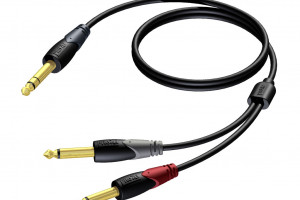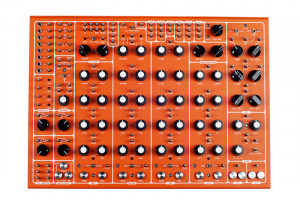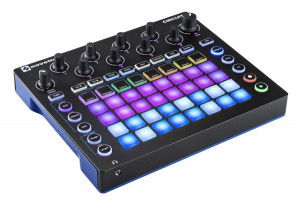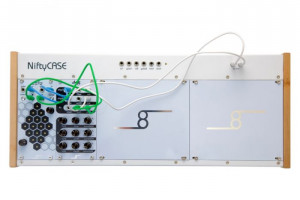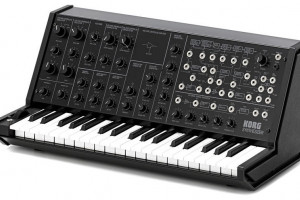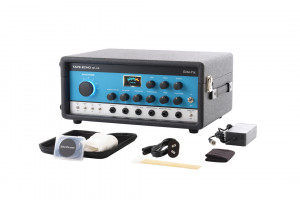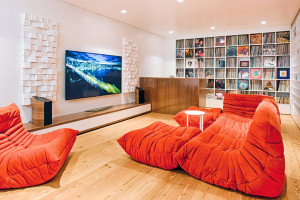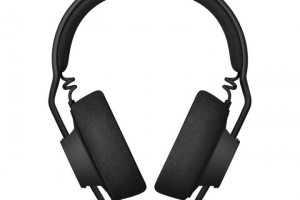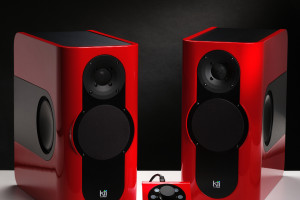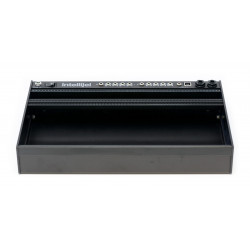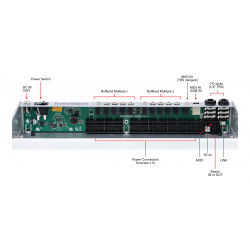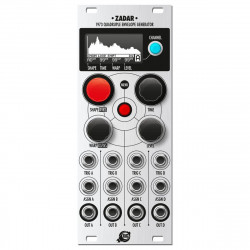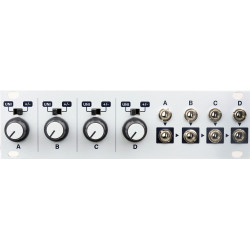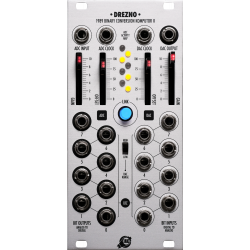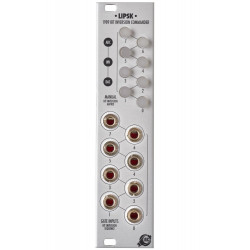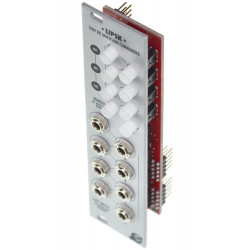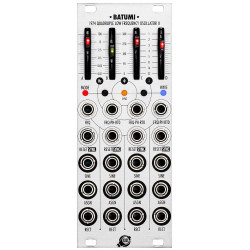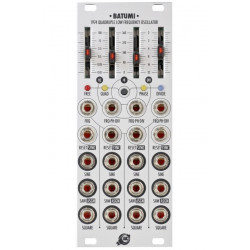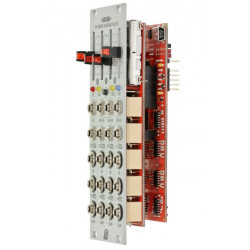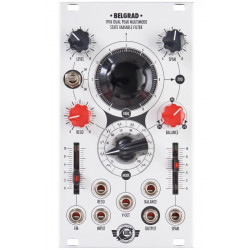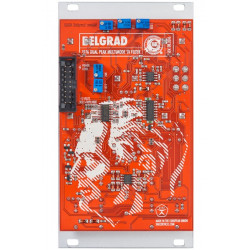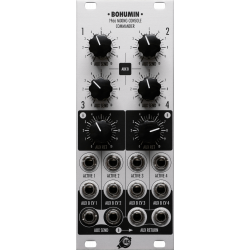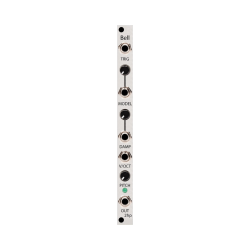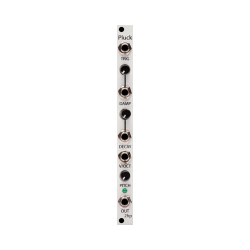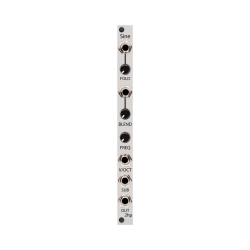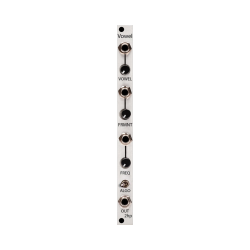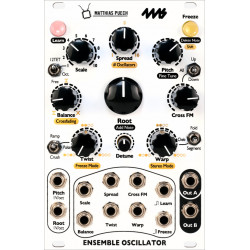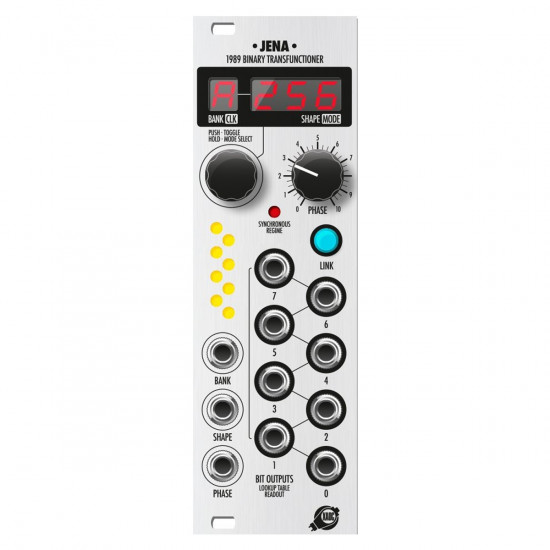
- Stock: In Stock
- Model: XAOC-DEVICES-JENA
More from this brand
1989 Binary Transfunctioner
The new component of the Leibniz Subsystem which operates on signals and voltages through manipulating binary 8-bit numbers. Jena connects to the Drezno module in a loopback. A binary transfunctioner maps input functions (eg. waveshapes) to some other functions through the classic table look-up mechanism. Input 8-bit values are treated as indices to an internal memory map. The value read from successive locations of the memory are passed to the output.
A simple VCO sawtooth or a triangle wave may be transformed to a plethora of waveshapes from any of the shape banks, with additional, deep through–zero phase modulation. Individual bit outputs may be used to produce interesting signals as well. There is a dedicated bank of Walsh functions — with these signals you can perform additive Walsh synthesis, not very common in Eurorack, but a quite powerful technique.
Transforming slow waveforms to sequences of binary signals is a great way to create rhythmic drum patterns. Jena comes with a special bank that has plenty of such patterns — just connect up to 8 drum voices to individual bit outputs on Jena. The rhythms can be selected or morphed on the fly through external CV input.
Obviously, being limited to 8 bits both in phase and signal value, Jena will not deliver crystal clear timbres you may know from many wavetable oscillators. Instead, it offers buzzy, jittery and gritty sounds as well as jerky and skippy rhytms, just like vintage computers, that were sometimes unreliable and unpredictable.
- Digital waveshaper and function mapper
- Through–zero phase modulation
- Walsh function generator
- Drum pattern generator
- Voltage controlled bank and shape scanning.
- 70 mA +12V
- 50 mA -12V
- 0 mA 5V
-285x169.png)
